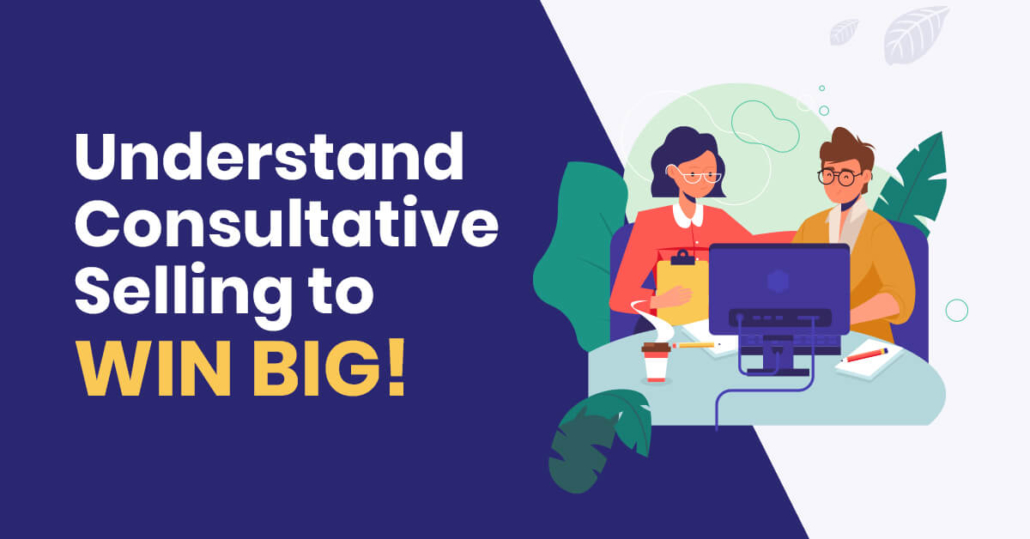Consultative selling is the number #1 strategy in sales.
89% of buyers describe the salespeople they ultimately do business with as “trusted advisors.”
From the sales strategy perspective,
Nearly 53% of sales reps believe following a consultative approach can make their sales process more efficient.
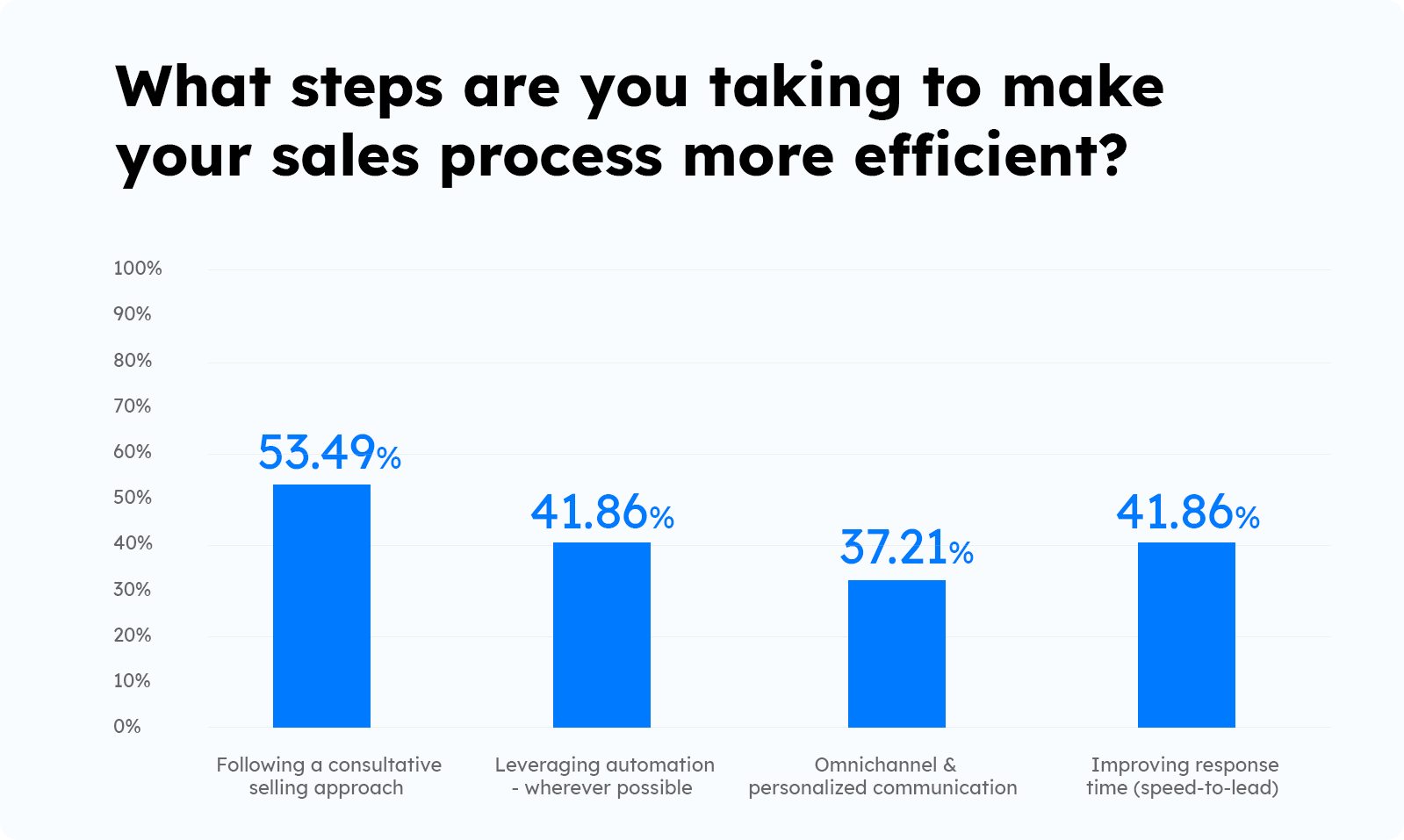
What do we learn from this?
That hard-selling will not work in today’s time.
People want to be advised on what’s best for them, and that’s why consultative sales.
But what makes this strategy unique? How can you apply this approach in your selling process? Let’s look at them.
What is consultative selling?
Consultative selling is a value-driven sales technique that puts improved customer outcomes first. It involves actively listening to customers, identifying their challenges, and proposing a solution. The goal here is to address the needs of buyers and propose measurable gains by using your product/service.
According to Mack Hanan, “consultative selling is selling at high margins so that the profits you improve can be shared with you.”
Why is consultative selling important?
Today, customers control the way they want to be sold.
However, they may be looking at the problem differently and may not know all the possible solutions. In consultative selling, you listen to them and offer a solution explaining how your product/service can help them achieve their business bottom line.
75% of buyers and 82% of sellers agree upon aligning with the buyer’s success metrics related to the purchase.
“By using a consultative sales approach, we help clients achieve their business goals. At times, clients do not have a strategy. But since we’ve been in the industry for a long time, we know the ins and outs, and using this experience, we help them build a strategy and not just sell a product,” says Arbaz Jawed, Manager – Inside Sales, LeadSquared.
Consultative selling helps both parties. Buyers find a solution to improve profits (or reduce operational costs), and the salesperson makes a sale. More importantly, because it’s a win-win partnership, the relationship between buyers and sellers lasts longer.
Now you may ask, how is consultative selling different from other sales methodologies. After all, other sales tactics also involve active communication between sales reps and buyers.
Well, here’s your answer.
Consultative selling vs. traditional sales techniques
| Consultative selling | Other sales techniques | |
| Proposition | Customer’s improved business outcomes. | (Seller’s) product’s features. |
| Sales process | It involves more interactions with the buyers, detailed discovery calls, and customized presentations/proposal decks. | Depending on your target market segment, the sales process may vary. For example, for selling insurance policies, agents or sales reps may have to spend more time explaining the benefits of their product. On the other hand, e-commerce products can be purchased instantly. Also, reps can follow a standard brochure or sales deck. |
| Discounts | Consultative selling relies on proposing a holistic solution to help the buyer overcome a specific business challenge. Because discounts may involve limiting certain product features/services, it is not generally applicable in this sales approach. | Salespeople may offer additional discounts on annual subscriptions compared to monthly subscriptions, freebies, seasonal offers, etc., to make a sale. |
| Competition | Sellers help customers compete against their competitors. | Sellers compete against their own competitors. |
| Scope | Specific industry and dedicated customers within it. | Generally, industry agnostic. |
| Closing sales | Sales reps let the customer close the sale. That is, the customer buys only if they find value in the business and not because of the influence from the seller. | Sellers try to close the sale using different strategies. |
| Valued outcome | Customer profits | Seller’s (company’s) profits |
Consultative selling puts customers first. It is all about decoding customers’ problems and proposing solutions that can be translated into financial gains.
But does consultative selling depend on the seller’s intuition?
No.
It is a definitive process. You can train your teams to follow the consultative approach.
Steps involved in consultative sales process
The most difficult challenge in consultative approach is to stop selling products and start selling the added financial values a salesperson could contribute to a customer’s business.
For instance, 65% of sellers say they “always” put buyers first. But only 23% of buyers agree.
Adopting a consultative approach requires changing the typical sales mindset and stepping into the customer’s shoes to understand their plight. For instance, instead of their profits, sellers have to work around the customer’s profit equations.
Also, consultative selling is an iterative process. That is, you work continuously to solve new challenges for your client.
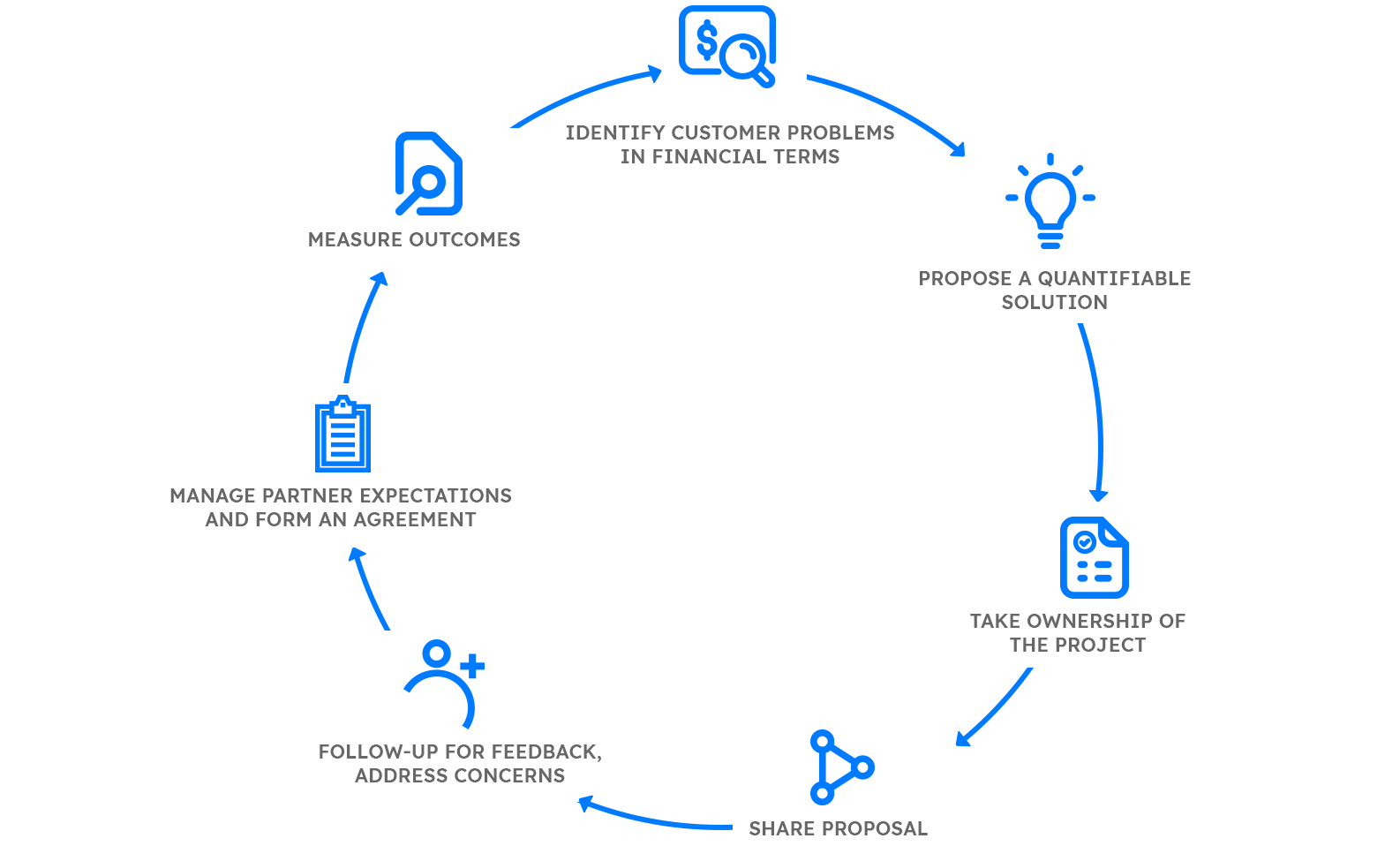
1. Identify customer problems in financial terms
Most customers don’t buy a product for its features. They want to see the real value in it.
The first step in the consultative sales process is to conduct discovery calls and identify customer problems in financial terms. Make sure you ask SMART (Specific, Measurable, Action-oriented, Related, and Time-bound) open ended questions.
For example, you can ask:
- How much time does it take to accomplish X?
- How is the issue affecting your operations? Does it have any financial impact?
- By when do you want this issue to be resolved?
Be aware of industry norms, average sales cycle, average turnaround time, etc. Then only you’ll be able to compare your client’s current standings and scope of improvement.
You can take inspiration from the following consultative selling script.
It takes you 2 hours to follow-up with a client and record the disposition. Our average is 1 hour. What value do you see in terms of productivity, resource optimization, faster revenue if we can bring you closer to our norm?
2. Propose a quantifiable solution
In the 1960s, when Tom Watson Jr. was restructuring IBM, he used to say – “We make computers, but we sell customer growth by applying them.”
At times he even proved that a dollar invested with IBM could yield a greater rate of return than the same dollar invested in their operations. He would quantify the gains he proposed to the customers.
Similarly, you should propose solutions that customers could measure. Instead of saying “you’ll see immense benefits,” use strong, convincing, and verifiable statements. Then only they’ll be able to find value in your proposition.
Here are the sample scripts.
- You will be saving nearly one percent or $13000.00 per year on supply-chain operations
- You will be driving up to $10 Million additional revenue per year.
3. Take ownership of the project
When you promise a result, you must take complete ownership of the project. It involves everything – from planning to allocating resources.
Because, at the end of the day, the client should look up to you for results.
“In one of our deals, I hand-held the client for an initial couple of months. I would explain the best practices, what they can do better, and more. They used to consult me on their business strategy. They would say – hey Arbaz this is what we are planning to do. Can we achieve this through LeadSquared? So, in a way, by being a trusted advisor to the client, we became integral to their growth plan,” says Arbaz Jawed, Manager – Inside Sales, LeadSquared.
4. Share proposal
All this while, you were trying to get the client’s requirements and your services on the same page. Now it’s time to share a formal proposal.
You can follow the McKinsey Situation-Complication-Resolution (SCR) Framework to present your proposition to the clients. This strategy involves showing the client’s current standing, complications that may arise by not addressing the challenges, and the solution and how your offering could help.
Make sure you include all the points you highlighted during your conversations with the client. Indicate how your solution can help the client gain more profits, faster results, and with greater certainty.
Here are the sample statements.
- (More profits) “For one of our customers, each $100 invested with us resulted in $1200 in revenue.“
- (Faster results) “New profits should be achievable within 90 days.” Note that longer time frames incur unpredictable risks (for example, the pandemic disrupted several businesses). If you could solve the problem sooner, make sure you highlight that.
- (Greater certainty) If you have a strong customer base, you can state that this strategy has worked X% of times. But if you’re new to the business, you can illustrate case studies to present your case.
5. Follow-up for feedback, address concerns
One of the most overlooked steps in consultative selling is to follow up.
In fact, 1 in 3 sales reps find follow-ups the toughest job in sales!
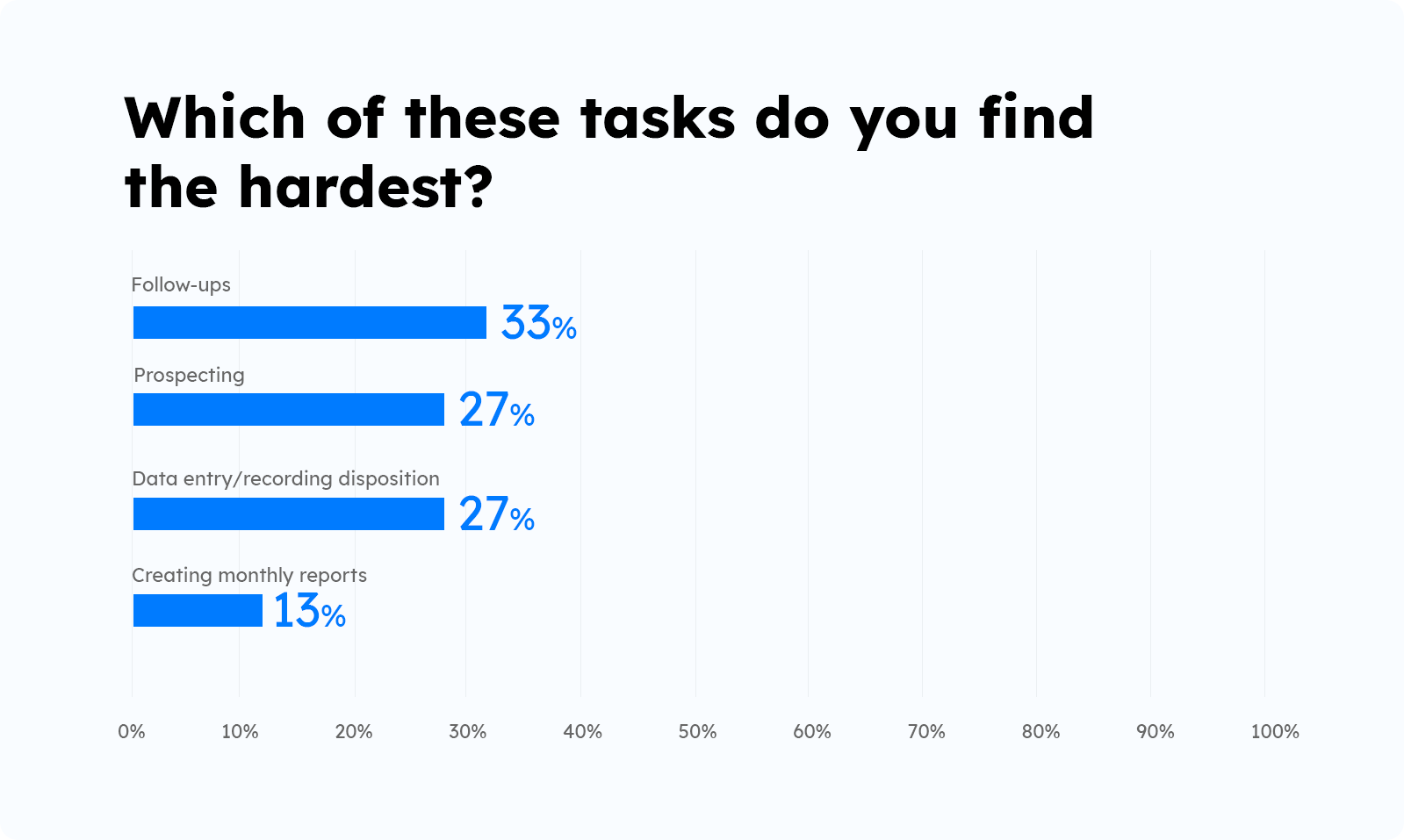
But just because it’s difficult, you shouldn’t skip it.
There’s tremendous value in the follow up.
In sales, a potential deal may go cold for numerous reasons. Reasons like change in management, people, project priority, etc., may create further hurdles in your deal. That’s why it is crucial to stay in touch with the stakeholders throughout the sales cycle.
You can follow up for feedback, revert with a solution for any concerns, etc. Make sure you address their questions asap and do not delay the proceedings from your end.
6. Manage partner expectations and enter an agreement
Discuss the timeline for the accomplishment of each installation and operational stage. Schedule cadence for periodic progress review. Be clear on the deliverables and money matters.
For example, you can illustrate the following financial benefits to the customer.
- The expected ROI (return on investment)
- Payback period: when they get their investment back.
- Net profit: what they make on their investment or their increment over and above payback.
- Cost: The part of the investment on which there is no return (e.g., one-time installation cost)
Once both the parties are on the same page, you can enter the partnership agreement.
7. Measure outcomes
The success of consultative sellers depends on the success of their customers.
That is, you’re doing great if your customers are doing great.
So, even after closing sales, stay in touch with customers and follow up with them for the following metrics.
- Has the cash flow/number of customers increased, or the sales cycle reduced after implementing your solution?
- Is there a gain in efficiency, productivity, or outcomes as a result of your offering? How has that gain impacted profits/revenues?
- Use checkpoints to measure the impacts of implementing your system into customer business functions.
So, these are the important steps in the consultative sales process. Remember, consultative selling is an iterative process. Repeat the above steps to find more use cases (new applications, upgrading, replacing existing tools, etc.) for your product/service with your client. This is how you’ll grow together.
Now let’s talk about the skills that make consultative selling successful.
The consultative selling skill-set
1. Active listening.
Top-performing sales reps listen more than they speak on sales calls.
Also, if you look at the seller behavior that makes a difference, you’ll notice 47% of buyers state that they’re more likely to buy if the sales rep is informed about their company and business needs (surpassing pricing by 3%).
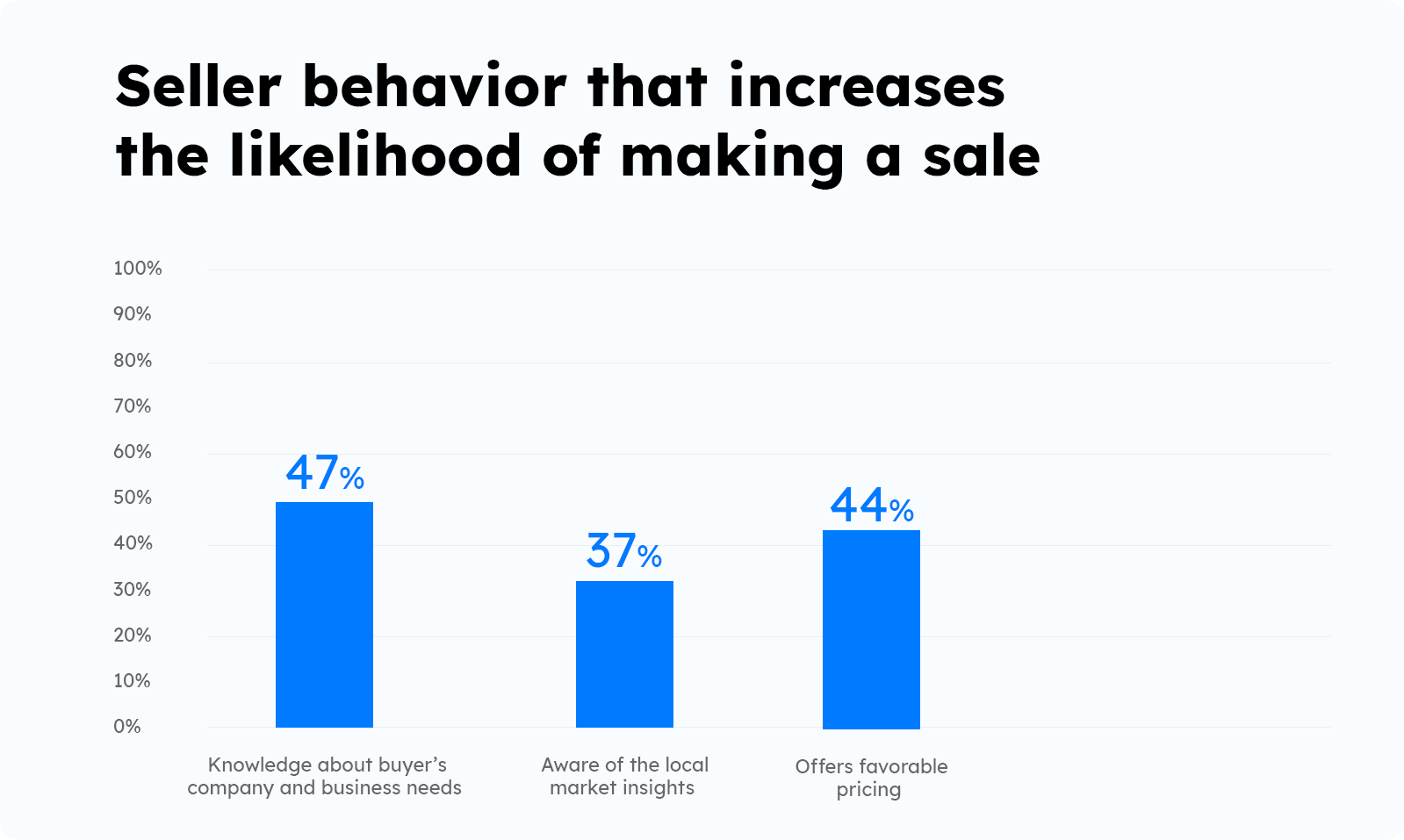
Active listening is crucial in consultative selling because that’s how you’ll uncover the client’s challenges.
“Clients should feel that you’re really resonating and listening to what they need and expect,” says Polly C. Heiss, Executive Director – Integrated Logistics, Kerry Logistics
2. Communication skills
89% of people believe that effective communication is crucial.
But unfortunately, 8 out of 10 people rate their business communication as average or poor.
Consultative selling requires reps to communicate effectively with stakeholders. Every discussion is the moment of truth. They cannot afford to be misunderstood.
Especially in today’s hybrid work environment, where still a part of the communication will be online, sellers must learn to communicate effectively and explain their proposition to the buyers.
“Communication practices are essential in this new environment where you rarely engage directly or in-person with your team,” says Kevin Ackhurst, Head of Sales – APAC, HubSpot
3. Presentation skills
Consultative selling requires sales reps to present their proposals effectively. Therefore, reps must know how to build effective presentations.
Having a sales enablement strategy can also help as it involves preparing sales collateral in advance to reduce the time spent drafting proposals in real-time.
4. Industry and product knowledge
39% of buyers go with the sellers who have industry knowledge. And 42% of buyers will immediately drop the deal if the sales rep doesn’t understand their own product or service.
Now you know why you should be aware of your product/service as well as industry trends.
These skills become even more important in consultative sales because you’ll be leading the change in your client’s organization. You’ll be the SME (Subject Matter Expert) for your client. Thus, having a thorough industry and product knowledge is a must.
5. Rapport-building
Rapport is a sense of understanding and trust. It is one of the important skills in sales because buyers need to trust the seller to build a healthy and long-term relationship with them.
38% of buyers state that trust in the relationship with the salesperson influences their purchase decision.
The simplest way to build a rapport is to remember the context and conversations with the buyer. And it has become simpler with technology.
97% of sellers say sales tools (such as CRM software) help them build stronger relationships with buyers.
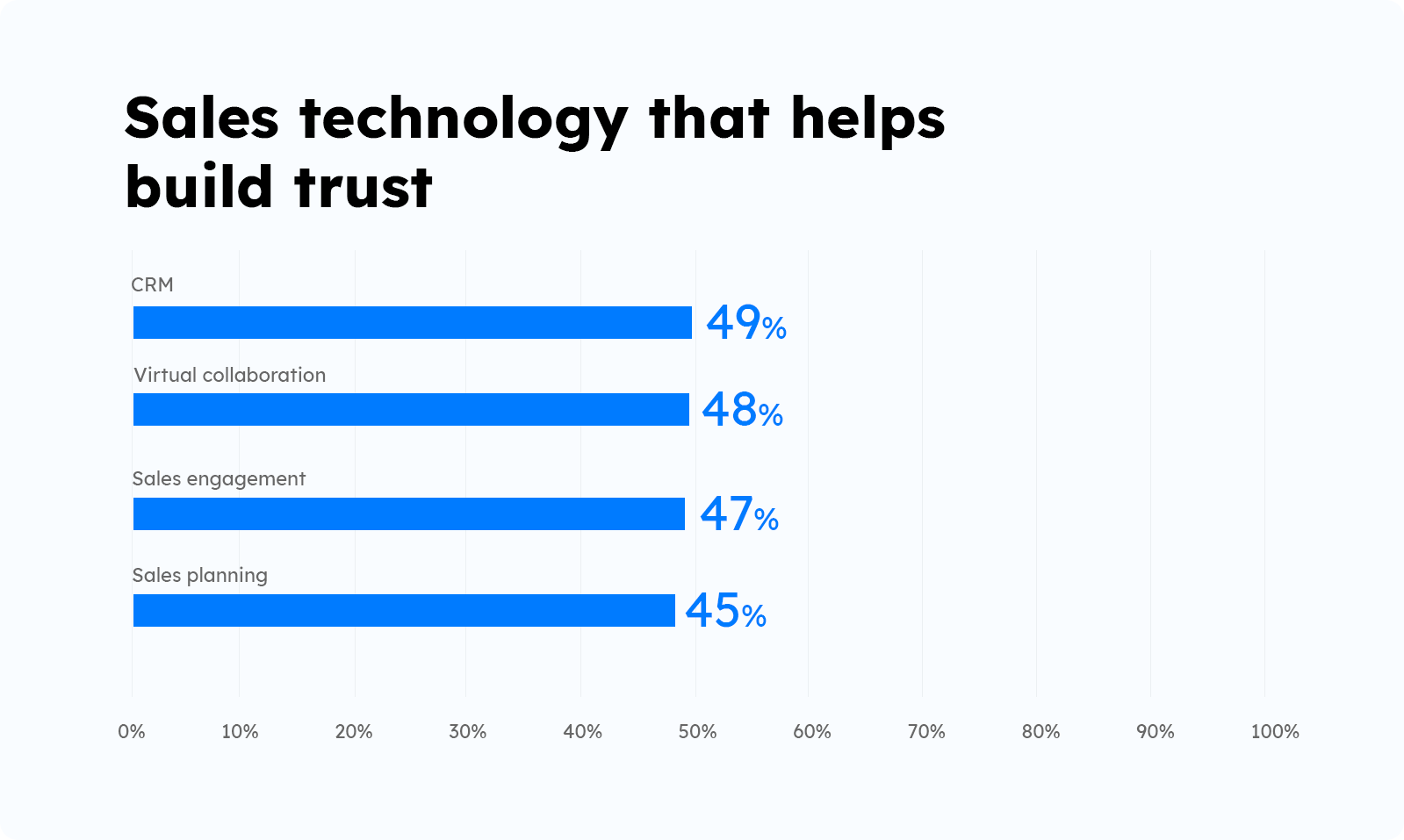
For example, LeadSquared sales execution CRM allows users to track the activities of the prospects across several channels, such as website visits, email opens, ad clicks, call details, etc.
This way, the sellers get an idea of the buyer’s interest at any point in time. They can also revisit the telephony communication or email/WhatsApp/chat/SMS messages to recall the context anytime.
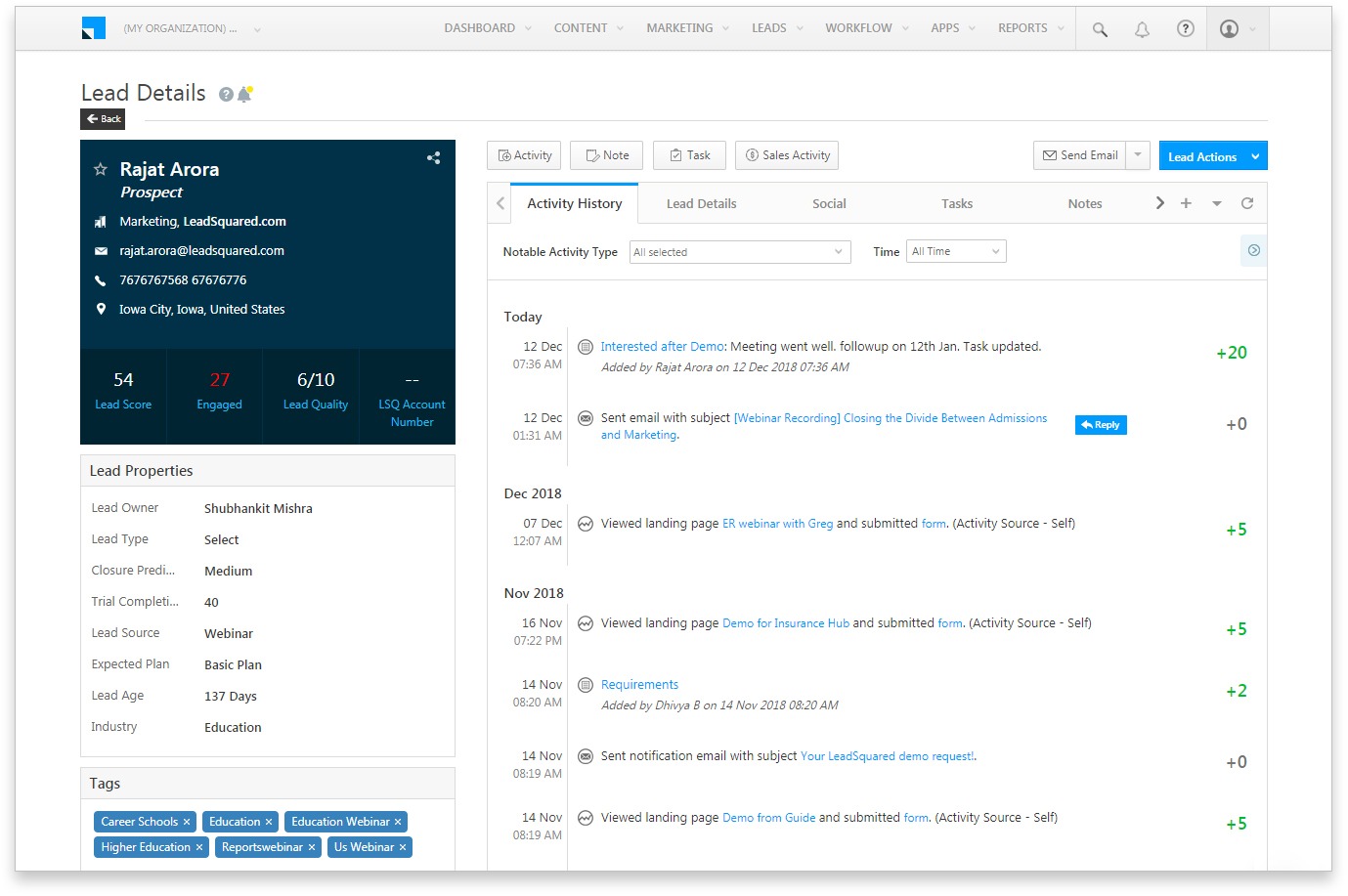
6. Ability to match customer requirements with your offerings
Note, the buyer’s requirement may not be the direct use case of your product/service.
For example, the buyer’s challenge may involve increasing revenue from a specific territory.
Now let’s say you have a Mobile CRM app.
As you can see, CRM apps are meant for sales reps to organize their tasks and manage communications and relationships with prospective and existing customers. So, under normal circumstances, you may think that the company should spend more on marketing or hire more sales reps to achieve their business goals.
But if you’re a consultative seller, you’ll try to find the gaps in their existing process. For instance, field sales reps waste half of their time in detours. So, by helping them with route guidance through their CRM app, they can avoid detours and do twice the number of meetings as they were doing before – leading to 2X sales possibilities.
Thus, in a consultative sales approach, you also get to look beyond the typical use cases of your product. :)
Next, we’ll look at some of the consultative selling examples to inspire you further.
Consultative selling examples
Earlier, people used to think that this strategy applies to high-value deals (e.g., B2B sales). But, in fact, all businesses, whether B2C or B2B, can follow this approach and be more customer-centric.
All it requires is presenting the customer’s challenges and proposing a quantifiable solution.
EdTechs like Coursera offer certifications with a clear proposition. There are X job openings, and by investing $Y in your learning, you become eligible for at least a $Z job.
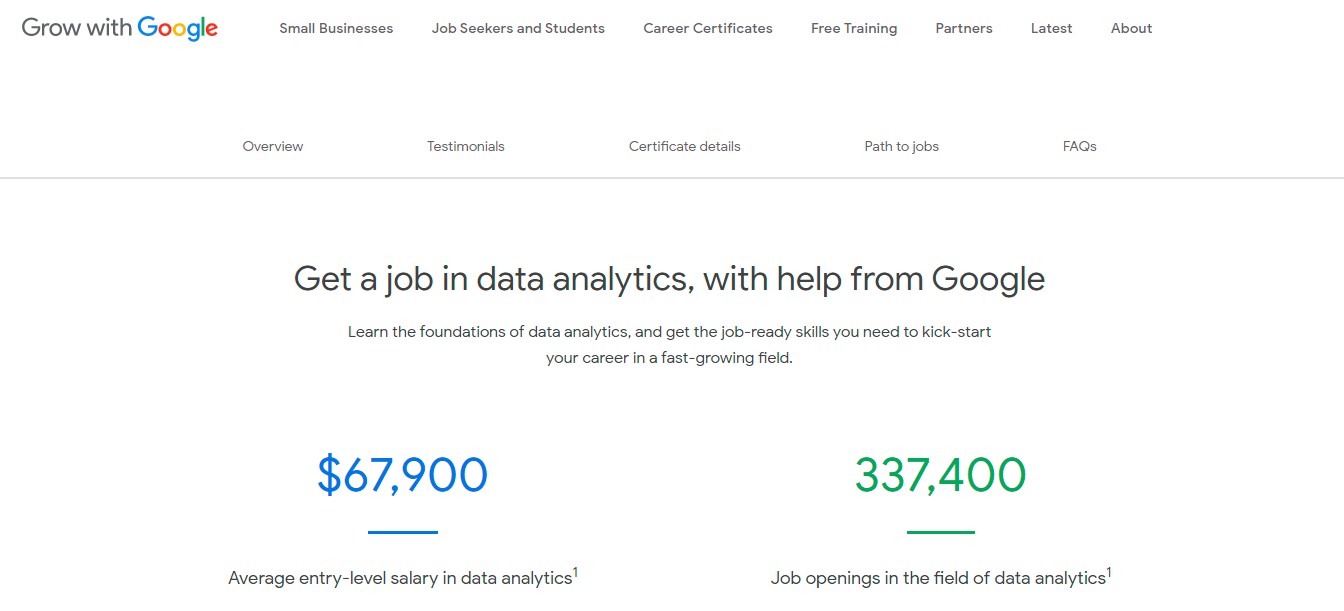
Here are some more examples of how you can apply the consultative sales approach.
In insurance sales, agents try to understand the health and financial conditions of people and accordingly propose policies. They suggest – by paying X amount in premium, you can avail Y benefits, which otherwise, they’ll have to pay from their pockets.
Now consider car sales. By explaining all the aspects of the car – mileage, maintenance cost, warranty, etc., sales reps can make buyers feel more confident in their purchase.
You can apply the consultative selling method in almost all sales scenarios. All you need to do is map the customer requirements with your offering and propose quantifiable gains. If you think sales technology like CRM software can help you gain better insights into your customers, you’re absolutely right.
We recommend LeadSquared CRM.
It can help you with the following.
- Fetch lead details automatically from your ad campaigns, landing pages, etc. It also auto-populates the fields (from LinkedIn, Clearbit, and other data enrichment tools) so that you don’t have to do it manually.
- Maintain a timeline of lead activities and interactions.
- Record and access conversations for training, quality control, and improvements.
- Schedule meetings, get reminders, and make notes on the CRM platform itself.
To experience all these features and more,
References:
- LinkedIn State of Sales Survey 2021 (APAC, United States and Canada)
- Consultative Selling™ by Mack Hanan







